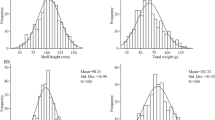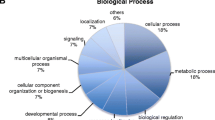Abstract:
Expressed sequence tag (EST) markers are important for gene mapping and for marker-assisted selection (MAS). To develop EST markers for use in catfish gene mapping, 100 randomly picked complementary DNAs from the channel catfish (Ictalurus punctatus) pituitary library were sequenced. The EST sequences were used to design primers to amplify channel catfish and blue catfish (I. furcatus) genomic DNAs. Polymerase chain reaction products of the ESTs were analyzed to determine length polymorphism between the channel catfish and blue catfish. Eleven polymorphic EST markers were identified. Five of the 11 EST markers were from known genes and the other six were from unidentified ESTs. Seven ESTs were found to be associated with microsatellite sequences. Analysis of channel catfish gene sequences indicated highly biased codon usage, with 16 codons being preferably used. These codons were more preferably used in highly expressed ribosomal protein genes and in highly expressed pituitary hormone genes. G/C-rich codons are less used in channel catfish than those in other vertebrates suggesting AT-richness of the channel catfish genome.
Similar content being viewed by others
Author information
Authors and Affiliations
Additional information
Received June 29, 1998; accepted March 29, 1999.
Rights and permissions
About this article
Cite this article
Liu, Z., Karsi, A. & Dunham, R. Development of Polymorphic EST Markers Suitable for Genetic Linkage Mapping of Catfish. Mar. Biotechnol. 1, 437–447 (1999). https://doi.org/10.1007/PL00011800
Issue Date:
DOI: https://doi.org/10.1007/PL00011800




